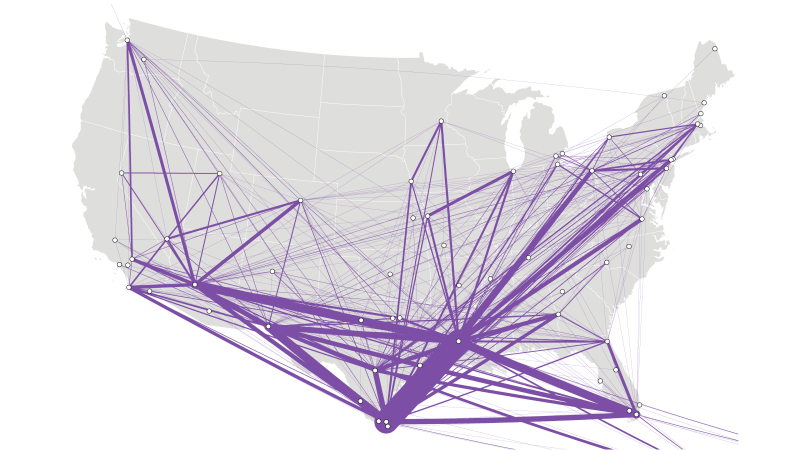In recent developments concerning U.S. immigration enforcement, particularly under the administration of former President Donald Trump, there has been a substantial escalation in the frequency of flights operated by Immigration and Customs Enforcement (ICE) to transport individuals who are detained for immigration violations. This enhanced operation is evident at various domestic hubs, including the international airport in Richmond, Virginia. Here, a notable scene unfolds each week, revealing not only the bustling activity of everyday passengers and planes but also a lesser-known aspect of immigration enforcement—flights carrying detainees under tight security, a practice that has become increasingly commonplace.
In a recent report, it was documented that about 50 detainees, shackled and under close watch, were unloaded from unmarked white vans and prepared to board a Boeing 737. Such flights serve as a vital link in the chain of deportation processes, which the administration has significantly ramped up since Trump took office. Notably, data from Witness at the Border—a group advocating for immigrant rights—indicates that Richmond is among approximately 70 locations used as transit points for these ICE flights, which are primarily tasked with moving individuals towards eventual deportation.
Trump’s policies have aimed at removing up to one million immigrants annually, leading to a notable rise in the volume of detainees being placed on airplanes for deportation. While air transportation for immigration enforcement has historically existed, the speed and breadth of the current programs are unmatched, driven by the urgency and scale of enforcement actions under the Trump era. Since his inauguration, there have reportedly been over 1,000 deportation flights, marking a 15% increase compared to similar periods in prior years.
Flight operations include a mix of private charter services and commercial airlines, operating as subcontractors for ICE, while some missions are conducted via military aircraft. In an interesting turn of events, as of March, several major carriers began requesting that their aircraft tail numbers—similar to vehicle license plates—be kept from public view on flight-tracking platforms. Such requests followed a policy change from the Federal Aviation Administration (FAA) that expanded the ability for companies to remove their flight information online.
This move to conceal tail numbers has elevated concerns about accountability and transparency. Enhanced tracking of ICE flights is not only integral for public awareness, but it also serves as a crucial tool for families searching for detained loved ones. Advocacy group representatives have expressed the dire implications of these changes, emphasizing that families are losing the ability to locate relatives who have been forcibly removed and transported across the country, generating feelings of being “disappeared.”
Upon inquiry, the Department of Homeland Security (DHS), which oversees ICE, did not provide comments regarding the motivations behind requesting flight data concealment. Airlines involved such as Avelo Airlines and GlobalX Airlines pointed to government requests for anonymity but refrained from broader comments due to confidentiality agreements with ICE.
Despite previous administrations, both Democratic and Republican, engaging in immigration flights, the scale during Trump’s presidency has reached unprecedented levels. Not only has there been a surge in deportation flights, but internal transfers of detainees between U.S. facilities have also surged. In comparison to the previous year, nearly 727 internal shuttle flights were documented in just one month—an alarming statistic highlighting the chaotic shuffle of individuals within the detention system, driven by a continuous influx of arrests.
A complex web of private firms now supports these operations, with companies like CSI Aviation in Albuquerque acting as prime brokers for subcontracted services. This particular company has benefited significantly from ICE contracts under the current administration, with its CEO being a well-known supporter of Trump and the Republican Party. Such connections raise questions about political motivations behind these contracts and how they could intertwine with immigration enforcement strategies.
Recent analyses from organizations such as La Resistencia highlight widespread measures to obscure ICE’s operational frameworks, noting changes including both the concealment of tail numbers and alterations in air traffic call signs, with references to Trump’s personal aircraft identifiers being used. Concerns about the lack of transparency and potential human rights abuses resonate strongly among advocacy groups, who assert that without visibility into ICE’s practices, the risk of maltreatment increases.
This report illustrates the intersection of immigration policy, enforcement practices, and accountability. It underscores the vital need for oversight and transparency in operations that significantly impact the lives of affected individuals.











